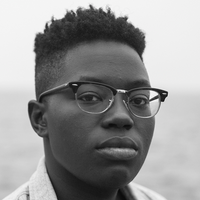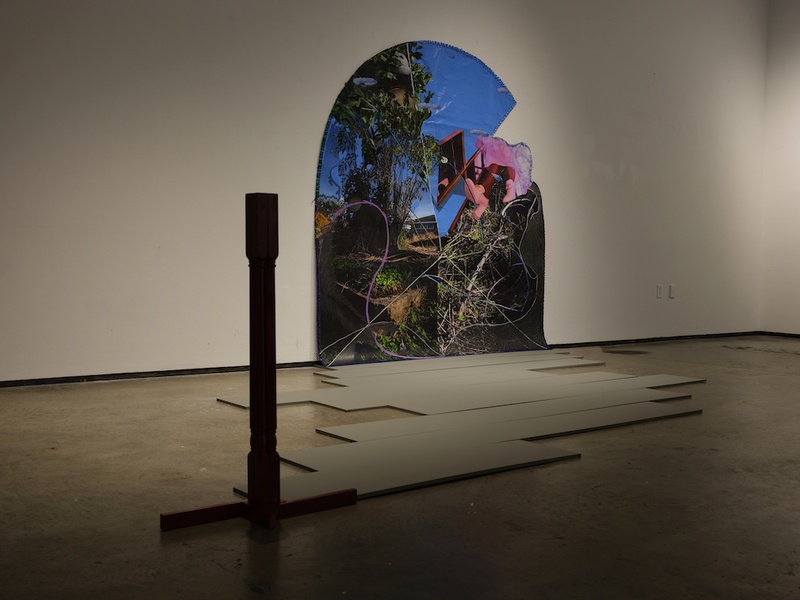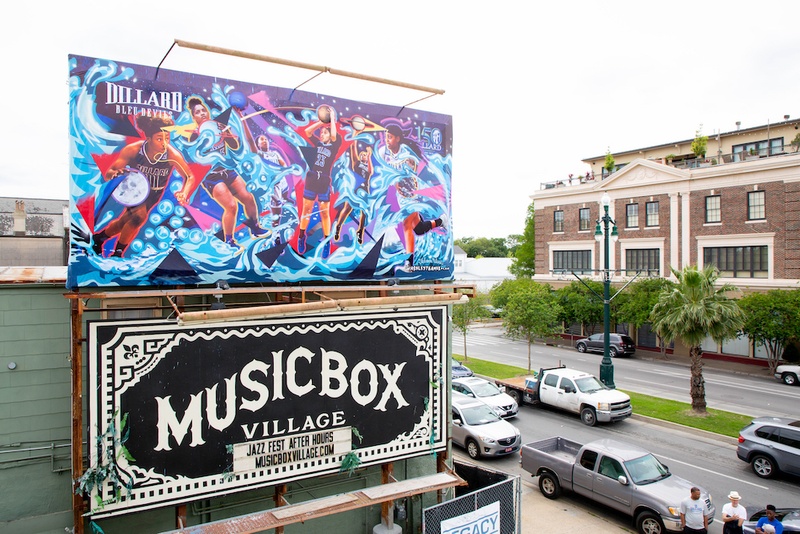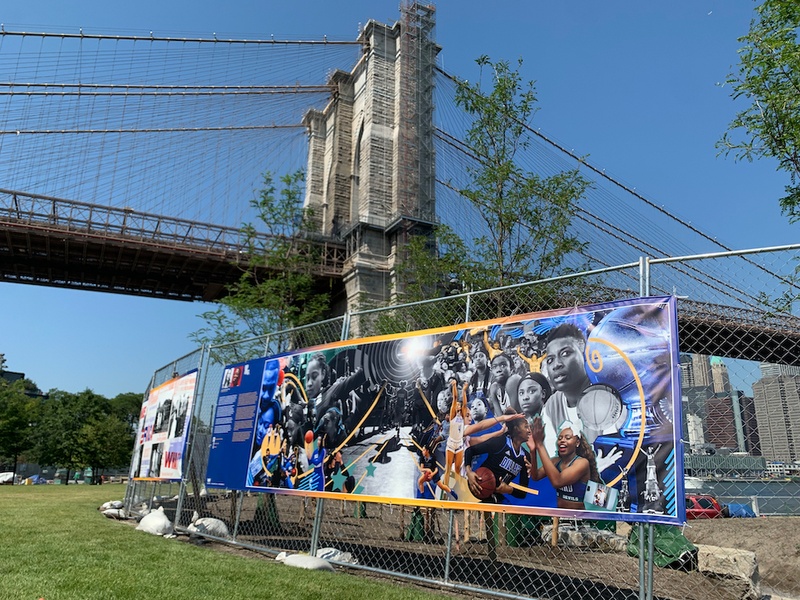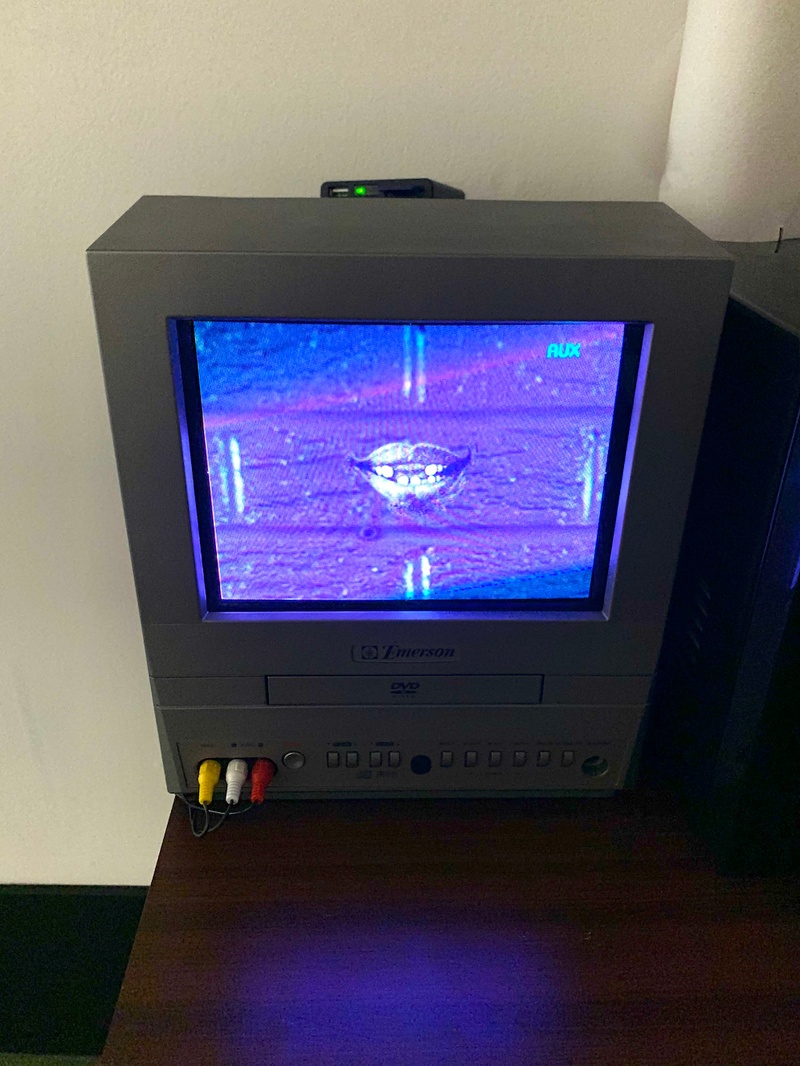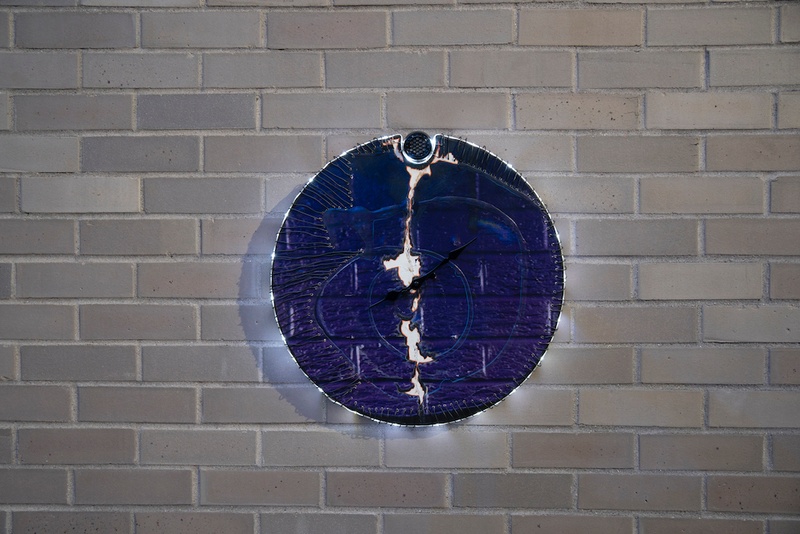As told to Annie Bielski, 2770 words.
Tags: Art, Process, Collaboration, Inspiration, Independence, Beginnings.
On building spaces, objects, and experiences that bring people together
Visual artist Ashley Teamer on making work that interrupts the landscape, the privilege and power of having people look at something you’ve made, and making art as a way of figuring things out.When did you start making art?
Oh, the beginning of the beginning. I have to say that my mom passed away in April, and she would always tell this story about how as a kindergartner, I drew an airplane and it was the most accurate airplane that she had ever seen made by a child. And she knew from that point forward…
I just always loved to draw and I was remembering recently that I used to draw—you know how McDonald’s has a play place sometimes? A ball pit and stuff? I was obsessed with this place called DZ Discovery Zone. In my spare time, I would just draw this crazy side view of a ball pit slash tube situation, and I would add pages on, so I had this unfolding map of a ball pit. I guess that’s how I got in the game.
The image in my head of your childhood drawings of the ball pit and tubes feels related to the shapes and forms that you pull out in some of your work now. There’s such movement and play in the abstracted forms of the paintings.
I love playing and I’ve always loved to play. I feel that’s definitely a theme. I also played with Legos my entire life. You just saying that reminded me that when I was in undergrad, I was very obsessed with this idea that I was painting abstractly like, “The painting I’m making is the space between paintings,” and then I would have these tubes coming in and out.
It’s always been in there.
I know, I know. I feel like in graduate school, I keep uncovering things I’ve been doing this entire time and I’m like, “Oh!”
Also Untitled, 2021, Matte Photo Print, Oil Pastel, Latex Paint, Twine, Wood
You and collaborator Annie Flanagan made a project about Dillard University’s Lady Bleu Devils in New Orleans. Your grandmother, Mary Dixon Teamer, founded the team in 1973 after Title IX.
Yeah, we followed the team for a season and that season actually ended right before COVID started in the United States. We did interviews, Annie was our documentary photographer. I did photographs, but I mostly was doing video while we were with the team. We are still working on making a series of billboards with collages of the players and installing them across New Orleans. [Hurricane Ida] interrupted that as well. I love being a part of a team. I played soccer in high school and I’ve played rugby for like eight years from undergrad into outside of college. I just always find that on these teams that I’ve been on, there’s just so many incredible people that have created a fabric that supports women. It’s just really beautiful to be a part of that, and Dillard totally let us into it. We were going to Chick-fil-A with the team and going to all the small towns in the Southern Gulf region. We really wanted to use the outdoors as a place to increase the scale of an image, interrupt the monotony of advertising and inflect it with this Historically Black College that was the first Black university in New Orleans, and just put that in the landscape. It is in our invisible fabric of New Orleans culturally, but we wanted to actually be like, “Hey, this is happening and it’s really beautiful. You probably don’t even know. You probably haven’t even thought about it.”
We made a banner for a nonprofit that gave us a grant to do the billboards to kind of show what we were doing. When I went to go see it in person, I was like, “Oh, this is how I want my art to be displayed.” This is for me the ideal scale. The artwork is outside, it’s got trees around it, it’s just visible to whomever may be there.
Collaboration with Annie Flanagan, To the Moon and Back (Dillard University Lady Bleu Devils 2018-2019), 2019, Vinyl Billboard with Latex Paint
This feels like a longer game project. With painting there’s immediacy to mark making, but sort of slowness overall. You also work in video and you DJ. How do you think about immediacy, fastness, and slowness when it comes to either making or showing your work?
I think the first thing that comes to mind is the speed of viewing something. I usually think about my work as I’m making it, how it’s going to exist in the world, if it’s going to be indoors or if it’s going to be outdoors. I think about those two things kind of in tandem sometimes, especially being in school right now, when you’re thinking about your work being seen or critiqued or whatever, it’s already kind of predetermined what the space might be. I try to think about the speed of viewing a lot because I’ve been a viewer often, and I know that sometimes when you enter a space where art is to be viewed, the way it’s hung up, the way that it sounds, the way that the light is, all can change the speed of your viewing of it.
So, if you have very regularly hung similar shaped pieces in front of you, you’re going to pop from one image to the next, you might circle around again. I try to think about the scale of the piece to the scale of the negative space, too, and how I want someone’s body to feel in relation to whatever imagery I’m presenting and wherever that imagery might be. Ultimately I want people to look at things and I want people to see and re-see and have more of a long-term relationship with an image because when you come into a space, you have a preconceived notion of what you’re going to see, then what you see challenges that preconceived notion. Then how your body feels challenges what you think that it’s supposed to be about. So there are just so many layers of maybe invisible conversation that can take place.
When I think about the way the work exists in reality, or in a space with another person, even if it’s digital too, I really try to extend the amount of time that someone wants to be in a space or experiencing the artwork. If there’s a message I’m trying to get out or some information that I’m trying to draw attention to, it’s a privilege to have people come and look at something. For me, that is the biggest privilege. If you make something and people go look at it, that is a huge power. That’s a huge power. So whatever messages I’m embedding in that image is drawing people to it. I want them to receive it, to question it and to want to have a conversation with other people or with me, or Google the thing, because it’s such a privilege to draw eyes to something.
How do you know when something is done?
I work in many different ways. I’ve been really obsessed with making clocks lately. I’ll have a vision of what a clock should be, I put in the mechanism, decide what the image is going to be, do it, do it, do it, and then it just is done because I followed all the steps that I laid out. But then I also make things very organically, as well as building collages with photographs and sewing things together. Honestly, I think it really goes to a feeling of satisfaction. If I go to my most essential feeling of why I even make things, I do have a sense of satisfaction, like the feeling when you clean up your whole house and you’re like, “Wow, I cleaned everything. There’s nothing else to be done here.” You clean out your car or you get rid of all the mail in your Gmail, or you fix that thing that’s been broken or you sew that pants hole that you’ve been meaning to patch and now it’s done. I blur my eyes, I look at it. I just have that feeling of satisfaction and completion. It’s hard to quantify. Audre Lorde’s essay, “Uses of the Erotic: The Erotic As Power,” I feel that essay every time I read it. It’s just a feeling and we just can relate it to so many things—a plant that dies that came back to life—it’s just this feeling of like, “Oh yes. That’s it.”
Collaboration with Annie Flanagan, Take Off (Dillard University Lady Bleu Devils 2018-2019), 2021, Banner
I love that. What you described is sort of a transformation to different states, dirty car, clean car, dead plants, alive plants, all these materials that you form into something else to arrive at another state, or an art object.
Yeah, that’s a really great way of putting it too. I’ve gotten really into plants, even before the pandemic. I had this Monstera that just would not stop living. It loves the humidity, I was in New Orleans at the time. Me and my roommate, we just were like, “Wow, this plant cannot be stopped. It is gonna just keep getting bigger and bigger.” I think transformation has been really important in my work. The world has been in transformation. That’s been something I’ve been thinking about, and also an incompletion. Sometimes the tension of even not feeling that feeling of done-ness, can also be a really interesting place to leave something too, so I try to play with the satisfaction and the knowing of done, and also the uncomfortability of something feeling not quite there, but perhaps that’s where it should be.
Reali-teeth-vee, 2021, Digital Image on TV
I’ve been thinking about this lately, too. Anytime I exhibit something, there’s sort of this illusion of done-ness, however brief, and then there comes a point where that falls apart.
Yes, totally. On that same tip, last semester at school, I had photographs where my house used to be in New Orleans and it was destroyed by the hurricane, it had knocked it down and my parents just hadn’t had the ability to rebuild an entire house on that spot. So it’s just an empty lot right now, and so I had been photographing that area and then I built these collages that had kind of an architectural shape to them. I was like, “Okay, I guess this is what I’m doing, I’m kind of still processing this hurricane that changed my life in 2005.” Then I was on a Zoom recently since I’ve been back [in New Haven], which has only been a week. Everybody on the Zoom was explaining what their research is about, and it came down to me and I was like, “I thought that my work was exploring these vacant lots of space that are trapped between being reclaimed by nature and being a part of the built environment having to do with Katrina and all these other things, but another hurricane had just happened.” I actually don’t even know where my work fits in now that we truly are in a crisis every 16 or so years. I think life is just constantly unfolding to where everything seems like a proposal for something else? I don’t know.
Also, when you’re in school, there’s this push to make statements about what you’re doing and who you are, but even being back a week and having the basis of what my work had become at the end of the semester be complicated yet again with another life-shifting event for my home—even in this moment, wow, I guess I really just don’t know.
Untitled, 2021, Clock, Photo, Wire, LED lights, Speaker
What is a good day in your studio?
Ooh, a good day. I make things to figure out what I’m doing, so I have to keep trying and experimenting and just trying to make a thing to figure out what it is or what I’m thinking about. I feel like a good day would be either the day where the plan kind of comes together and all the inspirations meet. I love actual to-do lists. A lot of my work ends up coming down to to-do lists, like “Print that thing, paint that thing over, sew that thing.” The moment where it comes together, even if it changes—because mostly the to-do list does change—but in the moment where I know, the compass appears and it’s like “This way is north,” and I’m like, “Yes, go that direction,” that day or a day where I have all the pieces I need and I’m just putting them together. I played with Legos literally my entire life, until eighth grade when Katrina happened and me and my brother’s combined Lego collection no longer existed. I really make a lot of parts of things, and then I kind of put them together in different ways. So the days where I get to put all the parts together is just fun.
I have to say that my mom was a teacher, she taught high school English, and then she taught teachers how to use technology and stuff. I feel that she knew that playing was learning. She really let me do whatever. She’s the type of person who’s like, “I heard that Legos make kids smarter. So yeah, girl, you play with Legos all day.” She’s like, “I heard that, that thing, you get into that, that’s going to be good for you, so let’s just go for it.” And so I think I really do have to credit her with allowing me the space to experiment and just do whatever I was interested in.
That’s a beautiful tribute. What has been most surprising so far on your creative path?
I think the surprising thing is all of the forms that my art takes. I feel like even in the past week I realized something that is also an art form for me, or that I think of in the same way I think of my artwork, is gathering people together. Being socially distant at school, it’s been hard for me to not gather people together. To make people want to be in the same place and talk to each other and connect is really amazing. I feel like the most surprising thing has been realizing that that is something I consider a part of my work, is the part where people connect and talk. I’m trying to build spaces or objects or experiences that allow for interconnectivity to take place. I’m from New Orleans and art and life in New Orleans are woven together. You can’t exist in New Orleans and not interact with creativity. Even calling it creativity is funny to me because I’m like, “It just is, as the tree grows, a band plays, someone is being celebrated and wearing a customized outfit.”
Those things are all so connected, so I feel that that has implanted into me wherever I go, I just want to know who I’m around. It’s really hard for me to understand where I am if everyone is still a stranger to me. I feel that that is maybe the newest surprise. Sometimes you want people to hang out with you, and for me, I’m like, “I’m being too much, I’m doing too much, nobody wants to do this.” I think to assuage my anxiety around doing that, I’ve been more trying to think of it like, “Oh, the reason I want to do this is because this is an extension of my creativity.” I want to bring people together because what we’re able to do together will always be bigger than what we can do alone. That’s just literally how nature works. So it just feels important to me to just try. And if it doesn’t work, that’s also how nature works. You try something and if it doesn’t work, then you just try something else.
Ashley Teamer Recommends:
DONATE TO HURRICANE IDA RELIEF
https://www.gofundme.com/f/ida-relief-for-pointeauchien-indian-tribe
https://www.gofundme.com/f/ida-relief-for-small-black-neighborhoods
https://unitedhoumanation.org/donate
https://cajunrelief.org/donations/donate-cajun-navy-foundation/
https://houseoftulip.org/make-a-donation
https://instagram.com/idasupportnetwork?utm_medium=copy_link
@nolablackyouthfund
https://cash.app/$nolablackyouthfund1

